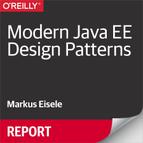Chapter 6. Conclusion
The world of IT as we know it is changing dramatically. Just over five years ago, developers would spend months or even years developing infrastructures and working on the integration of various applications. Huge projects with multiple participants were required to implement the desired specific features.
With the advent of DevOps and various Platform as a Service (PaaS) environments, many complex requirements must now be met within a much shorter timeframe. The Internet of Things (IoT) is also anticipated to change established applications and infrastructures. As a result of these converging trends, the way in which developers work is set to undergo a fundamental shift in the coming years.
As these trends unfold, the industry is already mapping the way forward, anticipating how all the components—from technologies to processes—will come together in this new development paradigm. And all of this will find its way into today’s enterprises. While the adoption speed will vary and the pure doctrine of the early adopters will have to be tweaked, there are strong signs that the recent uptake in microservices architectures will not fade. Knowing this, we need to be aware of the challenges to come and figure out how to adapt to these paradigms in practice.
It is a core responsibility for enterprise developers to help further shape this future and keep on learning how to best adopt the new technologies in the field. Appendix B contains a long list of references and recommended readings for getting started with this future. Another excellent publication for learning more about changing market conditions, customer needs, and emerging technologies as well as how to successfully build software products is the book Lean Enterprise (O’Reilly).
